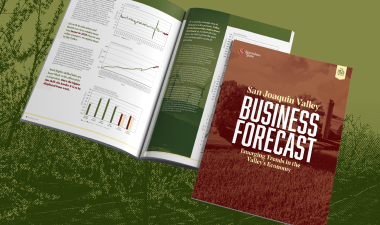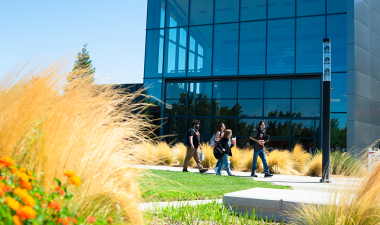Tariffs, trade wars and Federal Reserve rake hikes will continue to have a more significant impact on the farm-based economy of the Central Valley than they will have on other regions, and the result will be slow economic growth in the Central Valley through 2018 and possibly beyond. That outlook is according to the biannual San Joaquin Valley Business Forecast produced by Gökçe Soydemir, the Foster Farms endowed professor of business economics at Stanislaus State.
Here are some of the report’s highlights:
EMPLOYMENT
Rising interest rates are outweighing the impact of tax cuts on the Valley economy, and thus, the slow-down in the Valley’s total employment growth continued for another year in 2018. Projections point to an average yearly growth of 1.45 and 1.05 percent in Valley total employment in 2019 and 2020, respectively.
HOUSING MARKET
After a very long lag following the end of the Great Recession, housing permits registered a huge 32.84 percent spike in 2018. Valley home prices grew at an average annual rate of 8.50 percent, about the same rate as 2017, reflecting a shortage in inventory. Given the continued increases in long-term interest rates, now around 5 percent, projections point to slower growth over the next two years.
WAGES AND INFLATION
The yearly rate of inflation rose to 3.36 percent and stayed above 3 percent for ten consecutive months, the longest duration since the end of the Great Recession. Increases in overall price levels were mainly driven by factors such as the rising price of oil, wage increases and higher tariffs. Tax cuts and signs of overheating in the economy are added pressures on the inflation rate. The long-term benchmark inflation rate now stands at 2.29 percent. Valley consumers are likely to feel the further decline in their purchasing power in the coming months, with projections pointing to average yearly inflation rates of 3.20 percent in 2019 and 2.87 percent in 2020, assuming the Federal Reserve’s policies achieve their objectives. The increase in wages was offset by a higher than the long-term benchmark inflation rate.
BANKING
Total deposits in the Valley’s community banks increased 8.25 percent, slightly faster than the previous year’s growth of 8.01 percent, as interest rates climbed upward. The pace of growth in total deposits was a little higher than the typical growth of 7.34 percent. There was a significant 13.38 percent spike in Valley net loans and leases — about double the rate of 6.92 percent seen in 2017, when there was a rush to take advantage of still-low rates. Interest rates are now above 5 percent, adding an average of $150 per month to monthly mortgage payments.
EXTERNAL SECTOR
A new section of the report examines activity at the Port of Stockton, which handles shipments of goods such as cement, rebar, liquid fertilizer and rice — four bulk items highly susceptible to the pressures of tariffs. Forecasts will be developed for these items when the number of observations satisfies the minimum requirement. Tariffs have started to decrease imports of these items, because of retaliation, and have in-turn raised the prices of these products in the domestic market.
Soydemir’s biannual Business Forecast provides projections for the Valley's labor market, regional housing conditions, prices and inflation, banks and other depositary institutions and capital markets. Soydemir and his team use a unique forecasting model that produces lower and upper statistical confidence bands, with results that are expected to fall within this range.
Soydemir joined Stanislaus State as the Foster Farms endowed professor of business economics in 2011. He brings strong expertise and experience in business analysis and forecasting and has published extensively on applied econometrics, regional economics, financial forecasting, market analysis and international finance.


